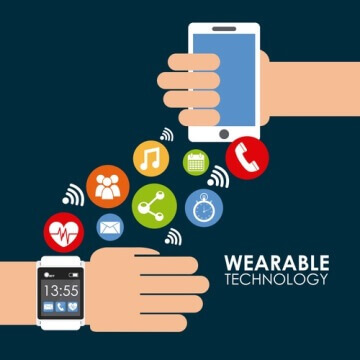Research shows that about one in five Americans owns a wearable tracking device, but how effective are these? In the article Can Fitbits and Other Wearables Really Keep Us Fit? Knowledge at Wharton interviews Mitesh Patel on the topic. Patel is an assistant professor of medicine and health care management at the University of Pennsylvania’s Perelman School, who has conducted research into the effectiveness of step-counting devices.
In the first part of the article, the discussion focuses on the accuracy of wearable fitness technology devices. Patel studied and compared various pedometers and accelerometers, finding most fairly accurate for the most part. Perhaps the most surprising thing Patel reveals is that smartphones had less variability than the wearable devices. Withe the pervasiveness of smartphones, that makes tracking technologies more widely available – not to mention the cost factor:
“With the number of smartphone apps that are out there that do this, people don’t have to go out and spend, say, $90 on a Fitbit. There are options through your smartphone that may be free or may cost you $3.99, $4.99, whatever it might be. So there’s a financial aspect to this as well.”
The second part of the interview focuses on effectiveness of the devices – whether the tracking devices actually help people to engage more and to improve their health. First, devices are not a magic bullet:
“Just giving somebody a wearable device is not alone going to make them more physically active. A lot of people think that if we just give someone a wearable so they can track their steps, they’ll get more engaged; they’re going to improve their health. That is actually not true, especially for the people who are less motivated to start with. If you take someone who’s a “quantified selfer,” who runs a lot, they may get more benefit out of just having the device. But the people who are less motivated probably need other kinds of help.”
To bolster the motivational aspect, Patel suggests that use increases when there is an added incentive or a social aspect to their use:
“Oftentimes, we need to pair these wearable devices or smartphones or whatever you’re using, with another engagement strategy. That can be something like a workplace wellness program, where you’ve got a competition going on, or there may be financial rewards up for grabs if you’re able to become more physically active. Or it could be a social incentive. We find that people who do things with their spouses or their partners or their friends and family tend to stick with it more than people who do it by themselves.”
The upshot is that these devices are fairly accurate and will get more so as technology improves, but motivation is a key factor in their effectiveness. Plus, they are only one facet or tool, which should be part of a more integrated, concerted focus on healthy lifestyle that includes diet, sleep and other aspects to health.

